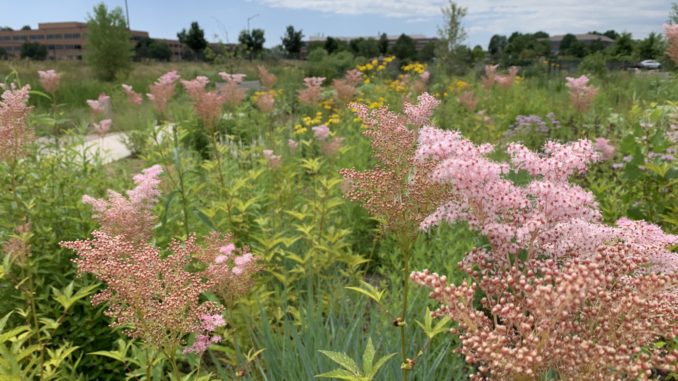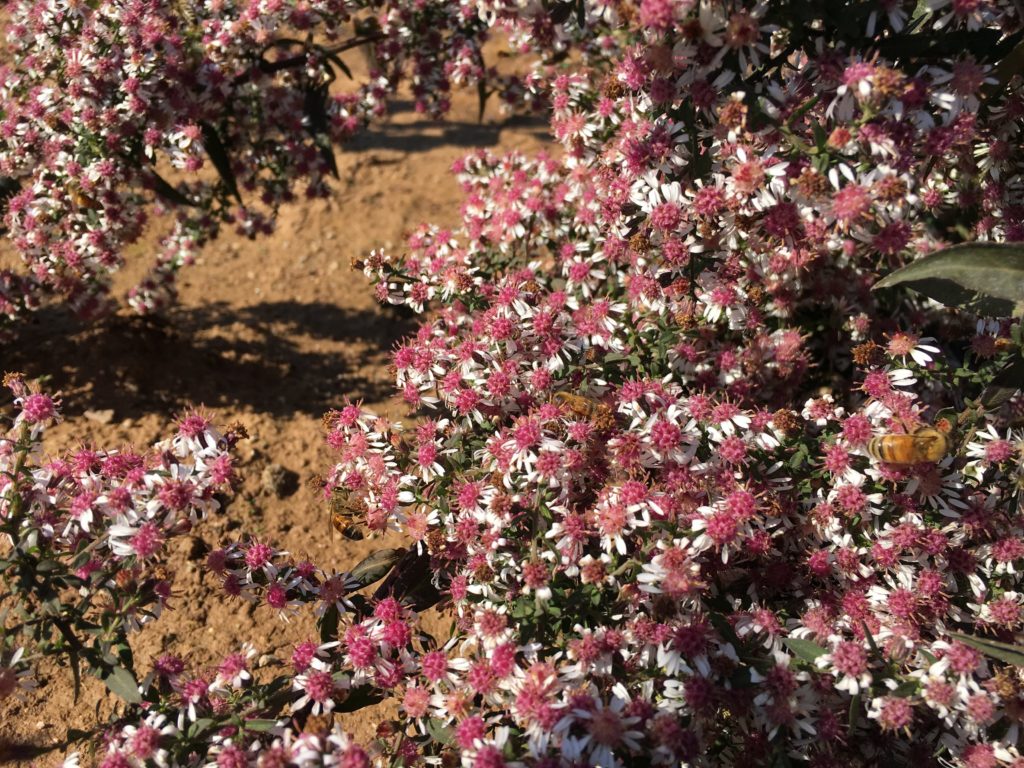

Bryan Fischer, Horticulturist, Gardens on Spring Creek
For many prairie natives, “early season interest” can mean June into July, not April or May as we often expect here in Colorado. Reluctant to risk weather damage to their hard-earned foliage, I’ve found these plants to be exceptionally slow to break dormancy in spring. This may also be because more than half of the biomass of many prairie plants lies underground as large root systems and nutrient storage organs, intended to see these plants through tough times in a challenging environment.
Either way, the gardener can use this trait to their advantage: prairie plants hit their stride just as many Colorado natives and classic garden perennials begin to lose steam, subdued by summer heat. The following represent a few late-season (July 15 and onward) performers that are appropriate additions to our Front Range landscapes.
The drought-tolerant Artemisia frigida (fringed sage) is often found skirting roadsides, shortgrass prairies, and barren areas in our region. Forming silver, celestial hazes of fine-textured, two-inch mounds of foliage and inconspicuous flowers, this plant is near bulletproof. In fact, the fastest way to kill it may just be to water it regularly. I particularly enjoy using groups of this species to break up plantings visually.
Queen of the Prairie is one of my favorite plants in the garden by mid-season. A queen both in appearance and culture, this plant can be a bit fussy. Only bother growing Filipenula if you happen to have a spot in the yard that remains moist by midseason. If you do, you’re in luck. Growing taller than me (don’t worry, I’m only 5’6”), Queen of the Prairie produces elegant, compound leaves all the way up gently swaying stems. Enjoy their regal, show-stealing blooms, like cotton candy puffs, mid-season.
Schizachyrium scoparium ‘Prairie Blues’ is one of the most asked about grasses in the Prairie Garden. Attaining two to three feet in height by fall, the grass starts out as a clean, blue mounded tuft of eight inches. In addition to its metallic luster, this selection of our native little bluestem grass is not prone to lodging (flopping over), even when irrigated, as many little bluestem cultivars tend to be.
Also, a mint, though much shorter in stature, Pycnanthemum muticum (blunt-leaved mountain mint) is a routine favorite of pollinators in the garden. Attractive to a plethora of insects, these plants run slowly, making attractive, two-foot-high mounds as they go. While their flowers are minute, the substantial bracts that sit below them read silver-white and do a fantastic job of setting off darker-colored plants. I have mountain mint paired with one of my favorite asters, Sympyotrichum lateriflorum ‘Lady in Black.’ This is a dark-leaved selection of the calico leaf aster – a fine-textured, well-behaved aster of the prairie. These plants don’t bloom until August or later but glaze themselves in a downright gaudy display of hundreds of minute aster-type blossoms, appearing almost fuzzy by peak bloom.

Owing to their investment in underground nutrient and water storage, prairie plants can be slow to establish themselves. Many prairie plants focus on growing their large root systems for the first few years of their lives, moving on to foliage and flower production from year three onward. If you have the patience for these plants, consider investing in your garden’s biodiversity, aesthetics, and pollinator appeal with some of these unique and underused perennials.
Note: This is the second in a two-part series on underused prairie natives based on Bryan’s work with the Prairie Garden at the Gardens on Spring Creek.
Support Northern Colorado Journalism
Show your support for North Forty News by helping us produce more content. It's a kind and simple gesture that will help us continue to bring more content to you.
BONUS - Donors get a link in their receipt to sign up for our once-per-week instant text messaging alert. Get your e-copy of North Forty News the moment it is released!
Click to Donate
